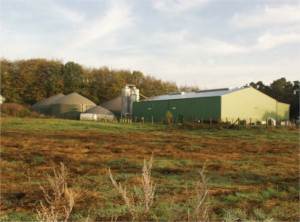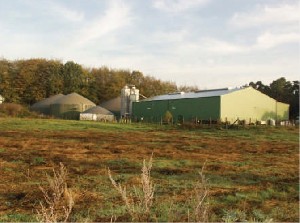During the production of biogas by means of an organic waste reclamation process, a release of hydrogen sulphide (H2S) killed 3 employees and a truck driver who had come to unload slaughterhouse waste. The high concentration of H2S in the facility complicated the fire department’s rescue operations. Roughly a dozen firemen were intoxicated to varying degrees. Extensive aeration (more than 24 hours) was required before access to the building was authorised. The accident occurred while the truck was being unloaded inside a facility that had been kept closed in order to limit the emanation of foul smells. The load was being dumped into a 100-m³ pit equipped with 2 agitators. The pit’s cover could not be closed as the electric actuating motor was out of service. The materials being unloaded were essentially pork entrails, viscera and liquid wastes having high sulphur content, pH near 8.5 and temperature of 60 °C. The waste had been loaded into the truck 24 hours earlier and was similar to wastes generally delivered by the slaughterhouse once to twice per week. The reaction between these substances and the material already present in the pit (animal and dairy wastes having a relatively low pH as determined by analyses performed after the accident) generated the release of H2S. The temperature of the environment and the agitation of the mixture promoted the dispersion of toxic gas throughout the unloading facility. To make matters worse, the extraction system at the bottom of the pit, which directs the foul air to the outside via a biofilter, proved to be insufficient.
Technical safety measures were installed at the stirrers and lids to stop any use of mixers if the lid is not closed. Two lines were created for liquids : those will be injected directly into the mixer without passing through the pit. The ventilation system was optimized, gas detectors were installed, intermediate storage (night, weekend) in the pit was banned and mixtures of materials were avoided whenever possible. Employees are trained.
Download the detailed report in .pdf format (119 Kb)





